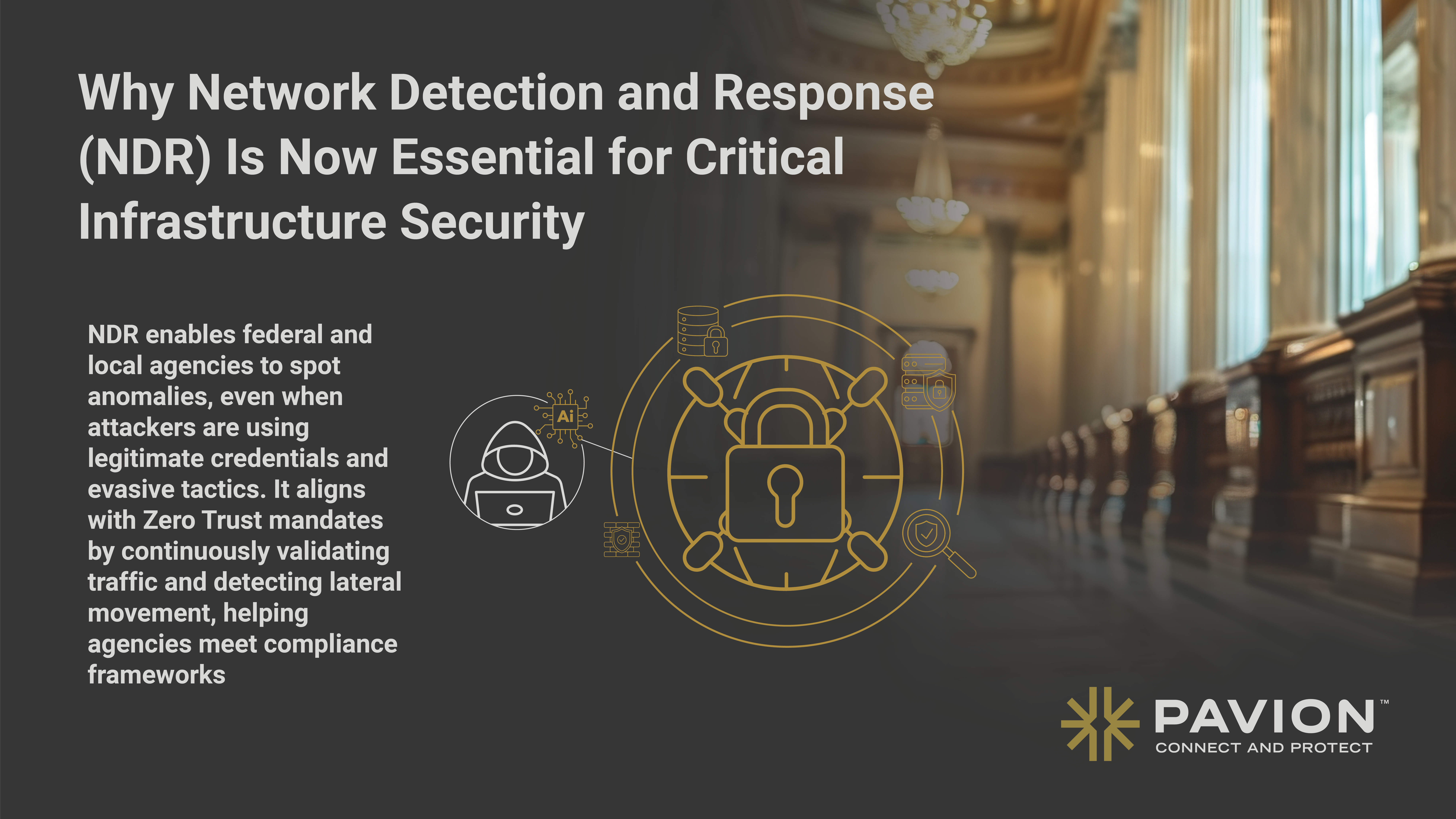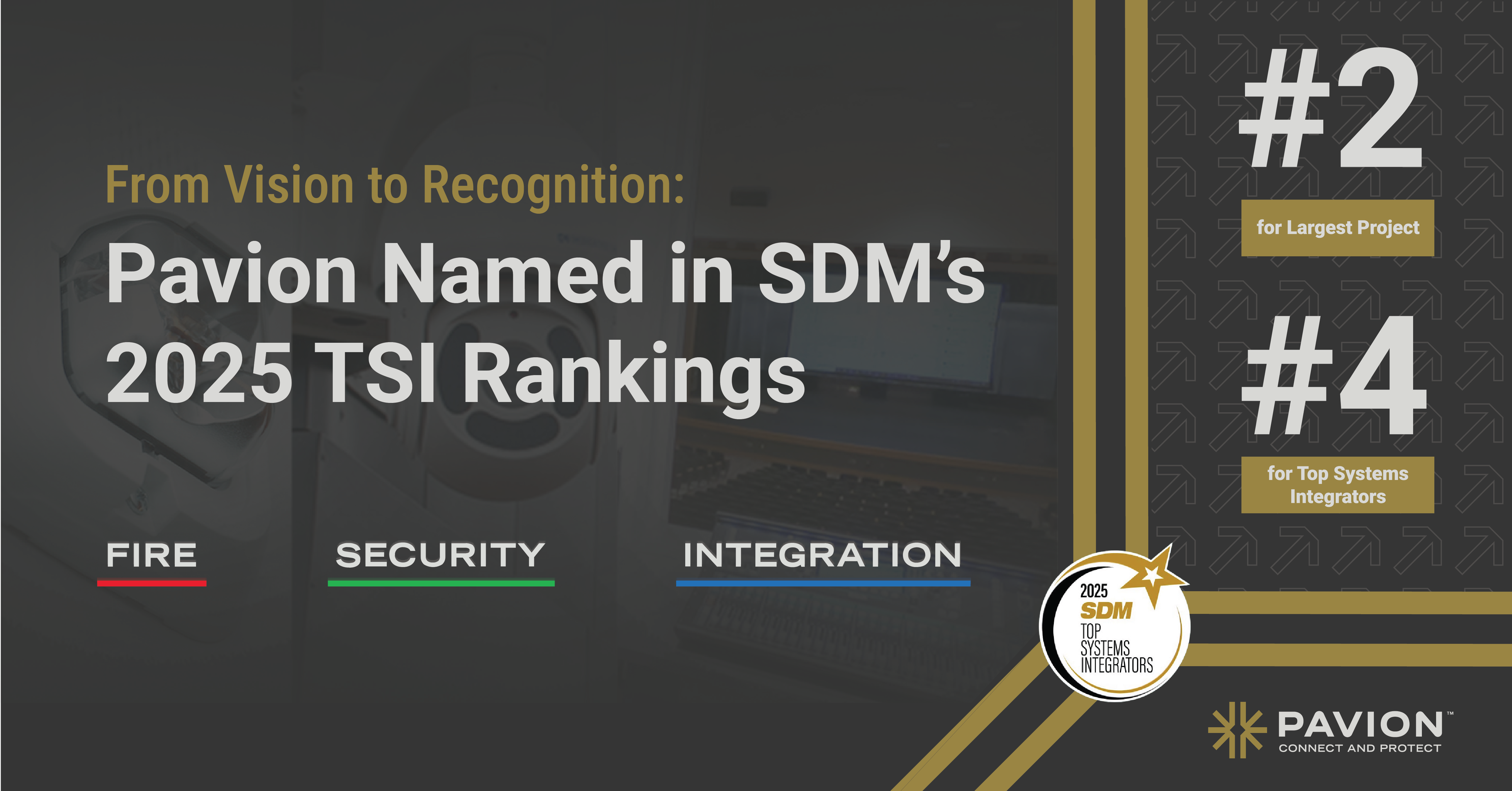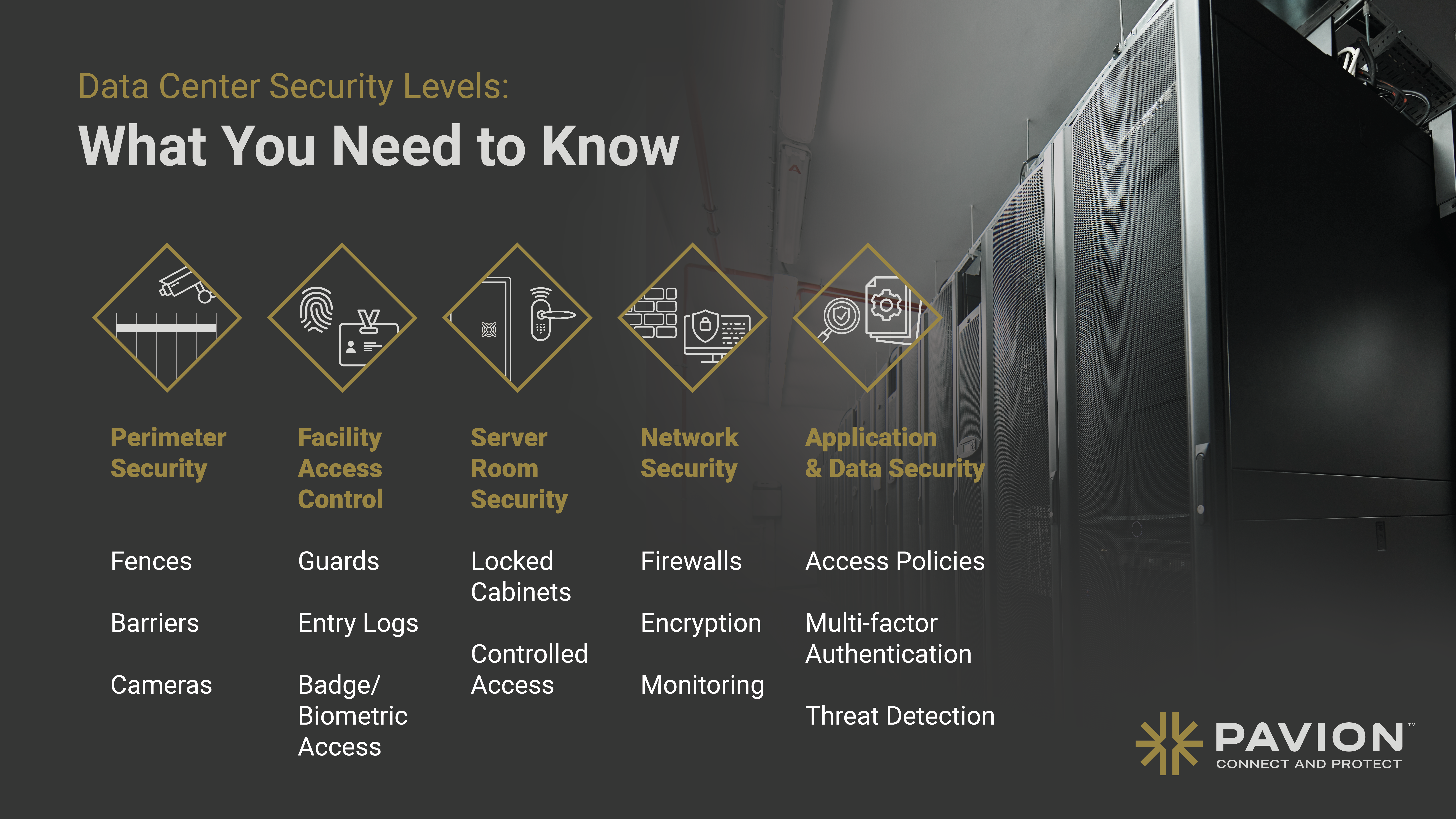
Cybersecurity and Physical Security: A Combined Approach
Pavion specializes in providing comprehensive security solutions that combine the power of cybersecurity and physical security. In today’s increasingly digital world, organizations must adopt a holistic approach to safeguarding their assets and information. By understanding the basics of cybersecurity and delving into the realm of physical security, businesses can effectively mitigate risks and protect themselves from potential threats.
Understanding the Basics of Cybersecurity
With the rapid advancement of technology and the increasing reliance on digital systems, cybersecurity has become paramount in ensuring the confidentiality, integrity, and availability of information. Cybersecurity involves protecting computer systems, networks, and data from unauthorized access, theft, and damage. It encompasses various techniques and practices, such as encryption, access controls, and incident response protocols.
In today’s interconnected world, cyber threats are on the rise. From data breaches to ransomware attacks, organizations face constant risks that can have severe financial, reputational, and operational consequences. Cybersecurity plays a crucial role in mitigating these risks by implementing robust security measures and protocols.
When it comes to cybersecurity, prevention is always better than cure. Organizations need to take a proactive approach to safeguard their digital assets. This includes conducting periodic risk assessments to identify vulnerabilities and potential entry points for cybercriminals. By understanding the weaknesses in their systems, organizations can take appropriate measures to strengthen their defenses.
One of the key elements of a strong cybersecurity strategy is implementing multi-factor authentication. This adds an extra layer of security by requiring users to provide multiple forms of identification, such as a password and a fingerprint scan. By doing so, organizations can significantly reduce the risk of unauthorized access to sensitive information.
Another crucial aspect of cybersecurity is educating employees about best practices. Human error is often a weak link in the security chain, with employees inadvertently clicking on malicious links or falling victim to phishing scams. By providing comprehensive training and awareness programs, organizations can empower their employees to recognize and respond to potential threats effectively.
Establishing incident response plans is also essential in today’s digital landscape. Despite the best preventive measures, organizations may still experience security breaches. Having a well-defined incident response plan enables organizations to respond swiftly and effectively to minimize the impact of a cyber attack. This includes isolating affected systems, conducting forensic investigations, and notifying the appropriate authorities.
Cybersecurity is a continuous process that requires ongoing monitoring and adaptation. As technology evolves, so do the tactics employed by cybercriminals. Organizations need to stay updated on the latest threats and vulnerabilities and regularly update their security measures accordingly. By staying one step ahead of cybercriminals, organizations can better protect their valuable assets and maintain the trust of their customers and stakeholders.
The Importance of Cybersecurity in Today’s Digital Age
In today’s interconnected world, cyber threats are on the rise. From data breaches to ransomware attacks, organizations face constant risks that can have severe financial, reputational, and operational consequences. Cybersecurity plays a crucial role in mitigating these risks by implementing robust security measures and protocols. What many businesses don’t realize is that many of the cyber attacks and hacks that occur are not an actual attack on the network, but instead are using a way into the network from other items on the network such as credit card machines, POS, security and more that may not have their security measures set up properly. It is important to work with a company that understands how this happens so the systems can be connected to the network in a way that does not allow for hacks and attacks.
When it comes to cybersecurity, prevention is always better than cure. Organizations need to take a proactive approach to safeguard their digital assets. This includes conducting periodic risk assessments to identify vulnerabilities and potential entry points for cybercriminals. By understanding the weaknesses in their systems, organizations can take appropriate measures to strengthen their defenses.
One of the key elements of a strong cybersecurity strategy is implementing multi-factor authentication. This adds an extra layer of security by requiring users to provide multiple forms of identification, such as a password and a fingerprint scan. By doing so, organizations can significantly reduce the risk of unauthorized access to sensitive information.
Another crucial aspect of cybersecurity is educating employees about best practices. Human error is often a weak link in the security chain, with employees inadvertently clicking on malicious links or falling victim to phishing scams. By providing comprehensive training and awareness programs, organizations can empower their employees to recognize and respond to potential threats effectively.
Establishing incident response plans is also essential in today’s digital landscape. Despite the best preventive measures, organizations may still experience security breaches. Having a well-defined incident response plan enables organizations to respond swiftly and effectively to minimize the impact of a cyber attack. This includes isolating affected systems, conducting forensic investigations, and notifying the appropriate authorities.
Cybersecurity is a continuous process that requires ongoing monitoring and adaptation. As technology evolves, so do the tactics employed by cybercriminals. Organizations need to stay updated on the latest threats and vulnerabilities and regularly update their security measures accordingly. By staying one step ahead of cybercriminals, organizations can better protect their valuable assets and maintain the trust of their customers and stakeholders.
Key Elements of a Strong Cybersecurity Strategy
Formulating a strong cybersecurity strategy entails a combination of proactive measures and reactive defenses. This includes conducting periodic risk assessments, implementing multi-factor authentication, educating employees about cybersecurity best practices, and establishing incident response plans. By focusing on prevention, detection, and response, organizations can fortify their cybersecurity posture and effectively combat cyber threats.
When it comes to cybersecurity, prevention is always better than cure. Organizations need to take a proactive approach to safeguard their digital assets. This includes conducting periodic risk assessments to identify vulnerabilities and potential entry points for cybercriminals. By understanding the weaknesses in their systems, organizations can take appropriate measures to strengthen their defenses.
One of the key elements of a strong cybersecurity strategy is implementing multi-factor authentication. This adds an extra layer of security by requiring users to provide multiple forms of identification, such as a password and a fingerprint scan. By doing so, organizations can significantly reduce the risk of unauthorized access to sensitive information.
Another crucial aspect of cybersecurity is educating employees about best practices. Human error is often a weak link in the security chain, with employees inadvertently clicking on malicious links or falling victim to phishing scams. By providing comprehensive training and awareness programs, organizations can empower their employees to recognize and respond to potential threats effectively.
Establishing incident response plans is also essential in today’s digital landscape. Despite the best preventive measures, organizations may still experience security breaches. Having a well-defined incident response plan enables organizations to respond swiftly and effectively to minimize the impact of a cyber attack. This includes isolating affected systems, conducting forensic investigations, and notifying the appropriate authorities.
Cybersecurity is a continuous process that requires ongoing monitoring and adaptation. As technology evolves, so do the tactics employed by cybercriminals. Organizations need to stay updated on the latest threats and vulnerabilities and regularly update their security measures accordingly. By staying one step ahead of cybercriminals, organizations can better protect their valuable assets and maintain the trust of their customers and stakeholders.
Delving into Physical Security
While cybersecurity defends against digital threats, physical security focuses on securing the tangible assets of an organization. Physical security measures aim to prevent unauthorized access, theft, and damage to physical resources, such as buildings, equipment, and personnel. It involves the deployment of physical barriers, surveillance systems, and access controls to safeguard sensitive areas.
The Role of Physical Security in Safeguarding Assets
Physical security acts as the first line of defense against unauthorized intrusions and potential threats. It includes measures such as perimeter security, CCTV surveillance, security guards, and access control systems. By implementing robust physical security measures, organizations can effectively deter criminals and enhance the overall protection of their assets.
Components of an Effective Physical Security Plan
An effective physical security plan encompasses several components that work together to create a secure environment. These may include conducting regular security audits, implementing access control systems, installing intrusion detection systems, and establishing emergency response protocols. By addressing potential vulnerabilities and developing robust security protocols, organizations can safeguard their physical assets against potential risks.
The Intersection of Cybersecurity and Physical Security
While cybersecurity and physical security are traditionally viewed as separate domains, they are interconnected and mutually dependent. In today’s threat landscape, cyberattacks often have physical implications, and physical breaches can lead to digital vulnerabilities. Understanding the intersection between these two realms is crucial for implementing a combined security approach.
How Cybersecurity and Physical Security Overlap
Cybersecurity and physical security overlap in various ways. For example, a cyberattack on a critical infrastructure system can have physical consequences, such as disrupting power or water supplies. Similarly, a physical breach, such as unauthorized access to a server room, can lead to a cybersecurity breach by compromising sensitive data. Recognizing and addressing these overlaps is essential for developing holistic security strategies.
The Need for a Combined Security Approach
The need for a combined security approach arises from the fact that adversaries often exploit vulnerabilities across multiple fronts. By adopting a unified strategy that integrates cybersecurity and physical security, organizations can create a more robust defense mechanism. This approach enables efficient threat detection, swift response, and enhanced risk management.
Implementing a Combined Security Approach
Integrating cybersecurity and physical security is a complex but necessary endeavor. By following a systematic approach and considering the unique challenges, organizations can successfully implement a combined security approach that maximizes protection.
Steps to Integrate Cybersecurity and Physical Security
Integrating cybersecurity and physical security involves several key steps. These include conducting a comprehensive security assessment, identifying areas of overlap and vulnerability, implementing appropriate technical solutions, and providing comprehensive training for employees. Collaboration between cybersecurity and physical security teams is vital to ensure a cohesive and effective security strategy.
Challenges in Combining Cybersecurity and Physical Security
Combining cybersecurity and physical security presents certain challenges. These may include differences in terminology, technology integration, and the need for cross-team collaboration. Overcoming these challenges requires effective communication, cooperation, and a shared understanding of the mutual benefits of a combined security approach.
The Future of Combined Security
As technology continues to advance, the future of combined security holds significant potential. Innovations such as artificial intelligence, machine learning, and automation are reshaping the security landscape. Embracing emerging trends and leveraging the power of technology can further enhance the effectiveness and efficiency of combined security strategies.
Emerging Trends in Cybersecurity and Physical Security
The field of cybersecurity and physical security is constantly evolving. Emerging trends include the use of advanced analytics for threat detection, the integration of cybersecurity and physical security systems, and the adoption of cloud-based security solutions. Staying informed about these trends and proactively adapting to changes is crucial for organizations seeking to stay ahead of potential threats.
The Role of Technology in Advancing Combined Security
Technology plays a vital role in advancing combined security approaches. Innovations such as integrated security management systems, advanced surveillance cameras, and threat intelligence platforms are empowering organizations to strengthen their security posture. By leveraging technology effectively and harnessing its potential, organizations can navigate the increasingly complex security landscape.
Pavion specializes in providing comprehensive security solutions that encompass both cybersecurity and physical security. Our expertise enables organizations to adopt a combined security approach that mitigates risks, ensures business continuity, and protects critical assets. By understanding the importance of cybersecurity and physical security convergence, businesses can safeguard their future in an increasingly digital world.
Secure Your Future with Pavion
At Pavion, we understand the critical need to stay ahead in a world where security threats are constantly evolving. Our tailored solutions in fire, security, and integration are designed to meet the unique challenges faced by enterprises, healthcare facilities, educational institutions, government entities, data centers, and retail businesses. We are dedicated to transforming safety, security, and communication through innovative technology and unparalleled service. Take the first step towards a more secure tomorrow by getting a Free System Assessment today, and let us show you how our expertise can connect and protect your organization.


